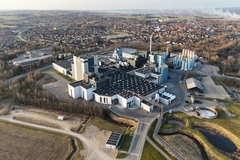
- Industry news
Industry news
- Category news
Category news
- Reports
- Key trends
- Multimedia
Multimedia
- Journal
- Events
- Suppliers
- Home
- Industry news
Industry news
- Category news
Category news
- Reports
- Key trends
- Multimedia
Multimedia
- Events
- Suppliers
UK FSA Publishes Campylobacter Results

11 Sept 2015 --- The UK Food Standards Agency (FSA) has published the final report of its year-long survey of Campylobacter levels on UK fresh shop-bought chickens.
The results for the full year, as previously published, showed:
• 19% of chickens tested positive for Campylobacter within the highest band of contamination*
• 73% of chickens tested positive for the presence of Campylobacter
• 0.1% (five samples) of packaging tested positive at the highest band of contamination.
• 7% of packaging tested positive for the presence of Campylobacter.

* more than 1000 colony forming units per gram (>1000 cfu/g). These units indicate the degree of contamination on each sample.
The survey results, which were published on a quarterly basis throughout the year, allowed consumers for the first time to compare the Campylobacter levels found on chickens from all of the major retailers. The final report contains data sets of the results from all of the retailers and includes comparisons between different sized birds.
Campylobacter is a food bug responsible for around 280,000 cases of food poisoning every year in the UK. The FSA has identified it as its leading food safety priority and has been working closely with the food industry to reduce the levels of contamination on raw chickens. The industry is working towards a target, agreed with the FSA, to reduce the number of the most contaminated birds to less than 10% by the end of 2015.
Steve Wearne, Director of Policy at the FSA, said: 'The FSA’s retail survey has been an important part of our work to tackle Campylobacter. Thanks to the focus the survey has put on the industry, retailers and processers are starting to invest in new interventions to tackle the bug.”
“Our new retail survey, which is already underway, will allow us to track progress and give us an indication of where these interventions are delivering results,” he said.
The FSA has welcomed case studies by food chains Marks & Spencer, the Co-op, Waitrose, Aldi and Iceland showing the results of their campylobacter reduction plans. Their data showed significant decreases in the incidence of campylobacter on their raw whole chickens. The tests were carried out on samples taken later than those from the FSA survey, with some targeted to demonstrate the effect of particular interventions.
The first set of results from the new FSA survey that commenced in July 2015, is expected to be published in November 2015.
2 Sisters Food Group, one of the UK’s largest poultry producers, responded to the FSA announcement, stating that “We lead the industry with our £10m campylobacter reduction programme we launched last November, but it is clear that there no easy way to tackle a complex problem quickly or 100% effectively.”
The company said that its reduction plan, touching all areas of the supply chain from farm through to label and packaging innovations, continues at pace and it won’t be until later this year that the full impact of our actions will start showing in the FSA data.
However, where the company has applied interventions such as ‘no-thinning’ of poultry flocks (the evidence suggests campylobacter is spread at this point) more recent results show significant signs of improvement.
“We would also reiterate our previous advice that, as a naturally-occurring bacteria which lives inside healthy chickens, campylobacter is killed by cooking and provided people prepare and handle chicken correctly, they’re at no risk,” said 2 Sisters.










